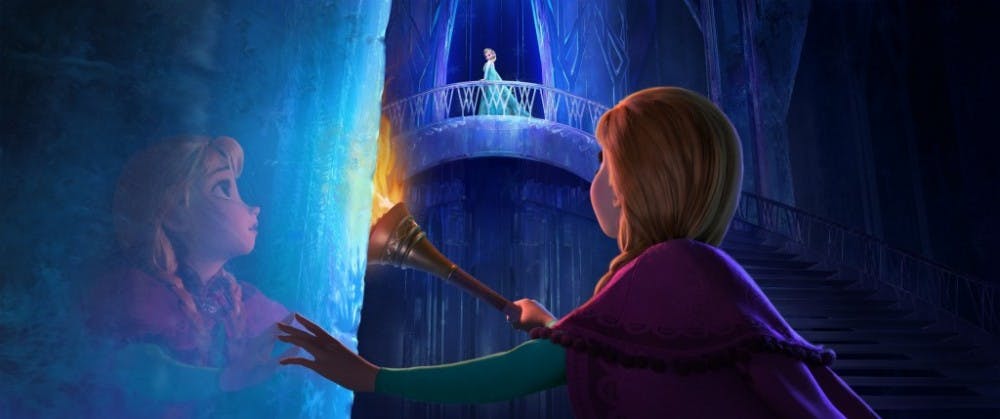At this point, we have all heard the commercials for Disney’s newest animated film, “Frozen,” that advertise critics who call the film Disney’s best since “The Lion King.” While this is still an opinion open for interpretation, the numbers at the box office are beginning to tell the same story.
“Frozen” quickly became Disney’s number one all-time animation debut and, according to Time magazine, has grossed $669 million so far without having gone worldwide. Earlier this week, the film won the Golden Globe for Best Animated Feature, and the movie’s soundtrack is the No. 1 album on both Amazon and iTunes.
While many great films have been made since the 1994 favorite hit theaters, “Frozen” will soon surpass “The Lion King” in overall box office records, as reported by Time.
So, is it the star-studded musical powerhouse of a cast, the breath-taking winter animation or that irresistible Disney magic that has given “Frozen” the power to rise above the rest?
Naturally, the success of the film is due to all of these things, but Disney’s new ideas as far as “happily ever after” is concerned could be another factor.
“The Princess and the Frog,” released in 2009, was the first hand-animated feature Disney had released in years, but, more importantly, it introduced a new era of princesses.
The main character, Tiana, was the first princess to be added to the list of Disney royalty since Princess Jasmine in 1992, but she doesn’t even reach princess status until the end of the film. For the majority of her time on screen, she is a fiercely independent waitress-turned-frog.
While the movie still ends with a wedding and true love’s kiss, songs such as “Almost There” and “Dig a Little Deeper” teach bigger lessons. Princess Tiana promotes the ideals that hard work pays off, no one can define your limits except you and love and support will get you through anything.
Disney continued to favor the heroine over the damsel in distress when it released “Tangled” in 2010. Rapunzel, as Tiana before her, embarks fearlessly on a journey to make her dreams come true despite anyone who tells her otherwise.
But again, at the end of the day the princess is married to her “prince charming” and everyone goes home happy. Well, everyone except Merida, of course.
Princess Merida of Disney’s 2012 film “Brave” was perhaps the first of Disney’s new brand of princesses to gain recognition for being different.
She didn’t play by the rules at all and, best of all, she didn’t need a man to complete her happy-ever-after ending. No kiss! The love at the end of this movie is all about family.
“Frozen” combines the best of all three of these films, but in their own respects, both princesses represent Disney classicism.
Anna plays the quirky, desperate-to-fall-in-love princess who has been cooped up for too long, and Elsa plays the scared bearer of too much responsibility who can’t escape from herself.
Anna’s happily ever after does end with a kiss from her “prince charming,” but in this case he is more realistically described as a bit of a “Fixer Upper.” Elsa, on the other hand, finds inner peace with her powers, her crown and herself. And of course, the love between two sisters is the centerpiece of it all.
Perhaps most memorable about Disney’s newest film is that, at the end, the answer to all of life’s problems was not a kiss from prince charming (even though at times everyone thought it was).


